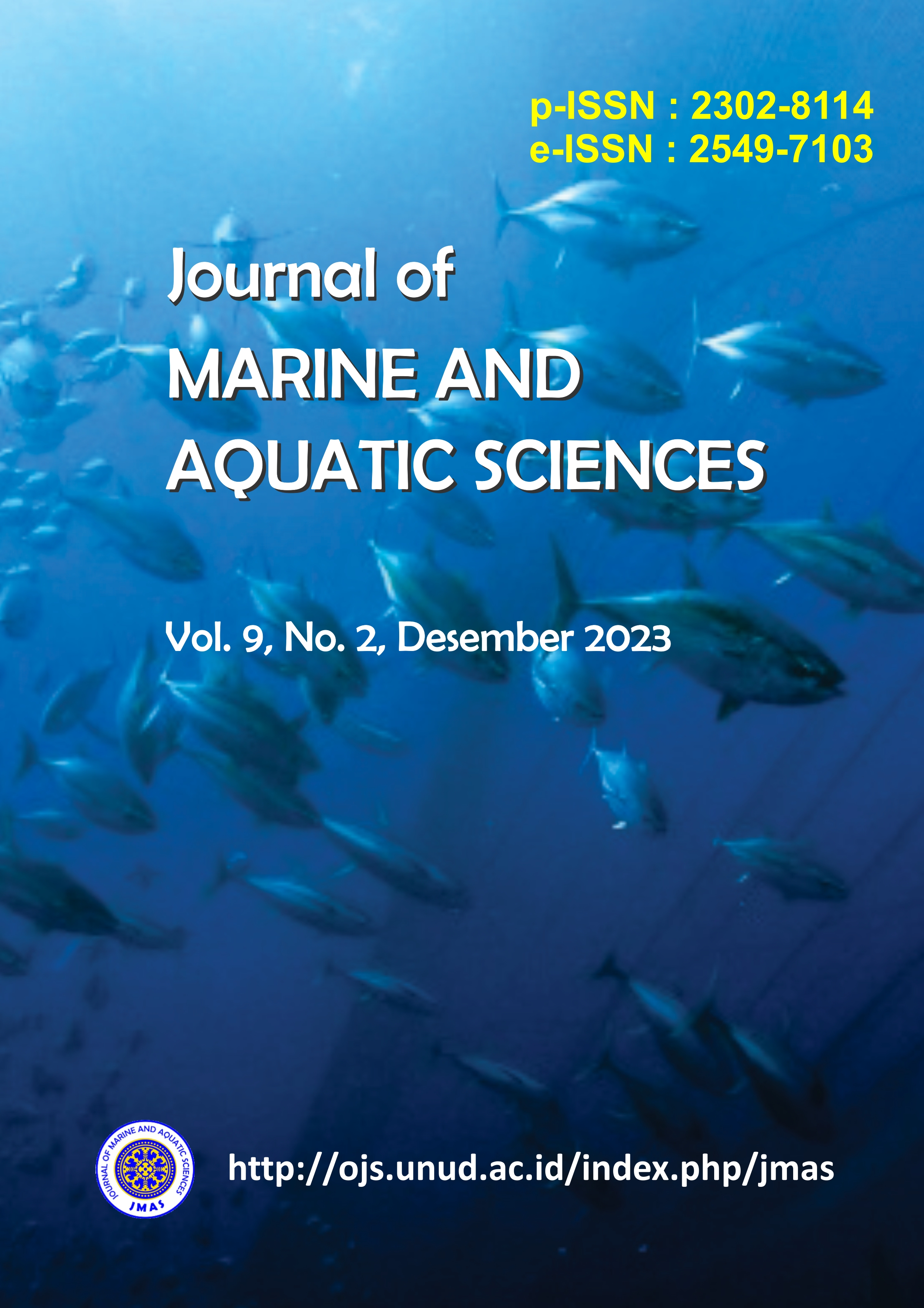Efek Perbedaan Jenis Rumput Laut Sebagai Agen Fitoremediasi Pada Sistem Budidaya Udang Windu (Penaeus monodon) Semi Intensif
Abstract
The primary sources of organic waste in prawn ponds include feed waste from the farming process as well as ongoing metabolic activity, such as the production of urine and faeces. The increase in organic waste has an impact on reducing the water quality, one of the solutions is by implementing phytoremediation with seaweed. This research aimed to analyzed the growth and ability of seaweed Sargassum sp., Gracillaria sp., and Caulerpa sp. as phytoremediation agents to reduce organic matter in waters. This research was conducted for 68 days and used an experimental method with a completely randomized design (CRD) with 4 treatments and 3 replications. The treatment are A Sargassum sp., B Gracillaria sp., C Caulerpa sp. and D control. The results indicated that treatment C tended to decrease total organic matter (TOM) and sediment organic matter by 123.74 mg/l and 1.37%, respectively. The result also revealed that Caulerpa sp. the most effective seaweed to be used as phytoremediation organic materials in tiger shrimp farms compared to the two other seaweed species (i.e., Gracillaria sp. and Sargassum sp.). The growth of seaweed showed that there was a significant difference in specific growth of seaweed. The best specific growth rate value in treatment C was 1.37 ± 0.1%. The results of this study shown that Caulerpa sp. has more effective remediate organic matter and improve seaweed growth than Gracillaria sp. and Sargassum sp.
Downloads

This work is licensed under a Creative Commons Attribution 3.0 International License.
Copyright 2012 - 2023 Journal of Marine and Aquatic Sciences (JMAS)
Published by Fakultas Kelautan dan Perikanan Universitas Udayana, Denpasar, Bali, Indonesia
JMAS (p-ISSN 2302-8114; e-ISSN 2549-7103)


